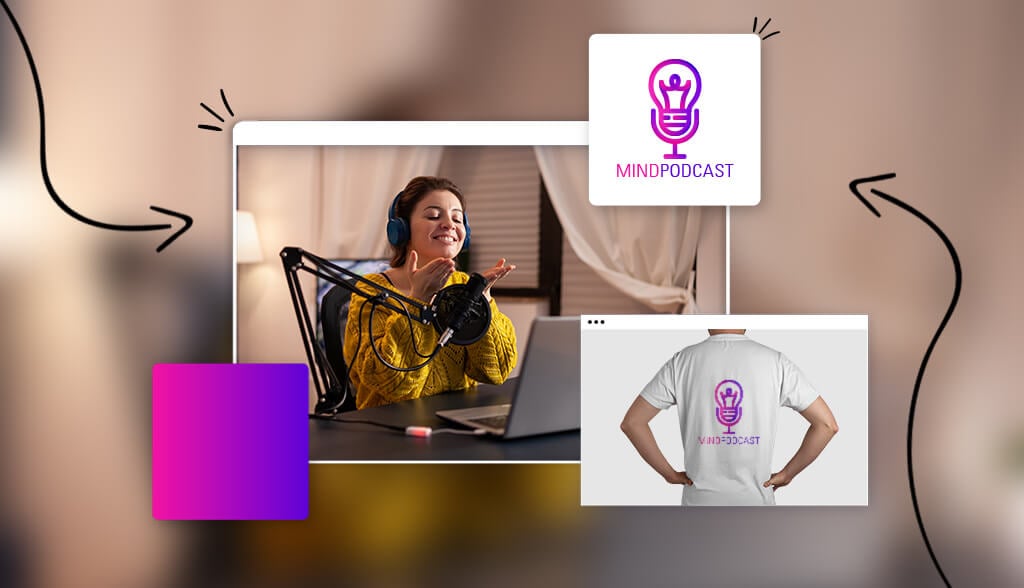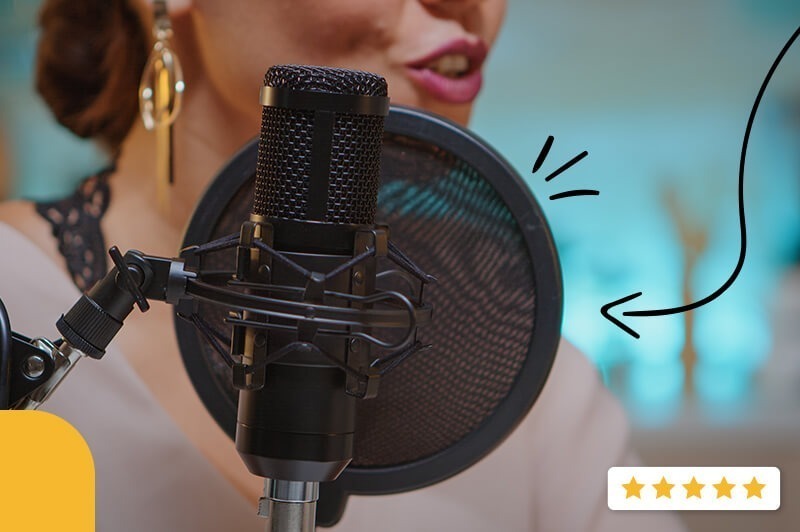
Businesses of all types now have a podcast to engage their target audience and create connections that build brand loyalty–and they’re proven to work exceptionally well.
A recent BBC Global News study found that podcasts are more effective than radio and TV advertisements, contributing to 89% higher brand awareness. Plus, brand mentions during a podcast stood out from other content delivering a 16% higher engagement rate and a 14% higher purchase intent.
Let’s look at key strategies to build a podcast brand so your business can also reap the benefits!
A podcast brand is a marketing strategy that gives your business a visual voice and structure using your brand’s personality and messaging.
Podcast brands differ from typical podcasts as they align their brand’s mission with their content without using advertisements.
A strong brand strategy combines visuals, content, and structure to convey the brand message to a specific audience while creating viewer awareness and encouraging people to tune in each time you release a new episode.
It works by ensuring your brand jumps out from your content and engages your audience’s attention in a non-sales pitch way.
The core components of any podcast are the quality of content and production.
Your brand’s unique and you use those qualities to deliver your message and create a reaction that gets people talking about your show. Your brand mentions should feel organic so listeners grow accustomed to them, increasing recognition and engagement consistently over time.
Audiences choose podcasts with value, and so you have to know what your audience wants to provide it.
To find what your audience wants, picture your ideal listener (known as an avatar). They’re one specific demographic that represents your entire audience. Then ask yourself who that person is and what they want/need to hear?
When you know who they are, create your podcast for them, include topics they’d like and make content decisions based on their needs. You can also look for questions they’re asking on other platforms or common problems they face and use those as your topic starting point.
When you focus on your podcast audience, you can tailor your branding message to create the value they’ll appreciate.
Most of us love visuals that pop, and more often than not, it’s the color, typeface, and style that grab our attention first. Your podcast brand must also catch people’s attention to make them stop and listen, and you achieve that by using the following eye-catching podcast visuals.
Your podcast logo (also known as a channel icon) is small in size (between 1,400 and 3,000 pixels square) but significant in importance as it appears in the YouTube search results on channel pages, video watch pages, and Google.
Your podcast cover art is another visual representation of your show. It appears in the podcast directories and must convey your show’s essence so it captures your future audience’s attention. You also require a podcast cover to submit your show on Spotify and Apple Podcasts.
You can also use typeface (font) to grab attention, evoke certain emotions, and create consistency throughout your podcast branding. The typeface you choose must be legible, in-line with your podcast’s brand message, and suit your target audience.
Your podcast video thumbnail represents your show’s episodes on YouTube. Viewers see it when searching for videos or on their YouTube homepage. It’s a smaller version (1,280 pixels by 720 pixels) of your podcast cover art, so you must ensure your original cover art is eligible when reduced in scale.
Social media graphics are how you promote your podcast on social media platforms. Each platform has different specifications, so you have to create individual ones to suit each.
Regardless of design, ensure your social media graphics match those of your podcast logo, cover art, and thumbnails to create a consistent podcast brand voice.
Your brand voice is the language you use to communicate with your audience and influence their perception of your show; it’s how you say what you’re saying rather than what you say.
A set brand voice helps you create familiarity with your audience, enabling them to remember and relate to your podcast’s personality.
You establish your brand voice by choosing a style that suits your core values and beliefs, podcast topic, and target audience and using it throughout your episodes.

With over 2 million available podcasts covering thousands of subjects, people aren’t short of choice when choosing one. However, most listeners have one thing in common: They want the best content available, so they seek podcasters who are an authority in their field.
Fortunately, it doesn’t matter which podcast category you’re in, but rather it’s how you deliver your content that builds an excellent reputation. How to build your reputation and authority:
There are many subpar quality podcasts online and that’s good news because that means there’s an opportunity for you to establish yourself as a reliable source of quality information.
Quality content includes what you say, how you say it, and the level of production used to convey it. Each element must be of the highest standard to make a lasting positive impression on your listeners.
Your target audience is passionate about what they listen to—that’s why they tune in. To ensure your listeners buy into what you’re saying, you must match their passion and genuine interest in your podcast topic.
Building a reputation and becoming an authority requires long-term content planning and consistent publishing. Everything you do must show people you’re serious about what they’re interested in and ensure they know your podcast is worth their time and investment.
Implementing a long-term planning structure helps you create and deliver that consistency and increases your podcast brand’s awareness throughout your target audience community.
Here’s how to plan long term and consistent content:
The day you release doesn’t matter, but consistency does. Releasing consistently sets your listener’s expectations going forward.
The more topics you have, the easier it’ll be to create your shows. Once you have your content, you can notify your listeners of their release dates in advance, increasing their motivation to tune in.
Successful podcasters often release monthly, weekly, and even daily, but all have a backup plan if something stops them from broadcasting. Don’t risk losing your listeners by keeping them waiting; record in advance and maintain that consistency.
Encouraging listener engagement is how you capture people’s attention, deliver value, and ensure your audience stays with you until the end of each episode.
Engaged listeners are more likely to hear your key messages and feel involved in the conversation, enabling you to increase your podcast brand awareness. And it’s often those people who become your brand ambassadors, recommending you to others.
How to encourage engagement:
When you ask for feedback, it shows your audience you value their input and address their most pressing questions.
After releasing a podcast, ask your listeners for their opinion on the content. This can increase engagement and give you new ideas for later episodes (ones you know your audience wants).
Use your social media channels to find topics your target audience talks about and ask them if they’d like it included in an upcoming podcast.
Let your audience know when they can participate in each show and encourage it by implementing consistent audience engagement rituals.
Now you know key strategies to put to use when building a podcast brand. Remember to focus on quality, consistency, and base everything you do around your audience.
After that, your branding will become a natural part of your listener’s experience, and they’ll associate it with the positive values your podcast provides.
This portion of our website is for informational purposes only. Tailor Brands is not a law firm, and none of the information on this website constitutes or is intended to convey legal advice. All statements, opinions, recommendations, and conclusions are solely the expression of the author and provided on an as-is basis. Accordingly, Tailor Brands is not responsible for the information and/or its accuracy or completeness. It also does not indicate any affiliation between Tailor Brands and any other brands, services or logos.
Products
Resources
@2024 Copyright Tailor Brands